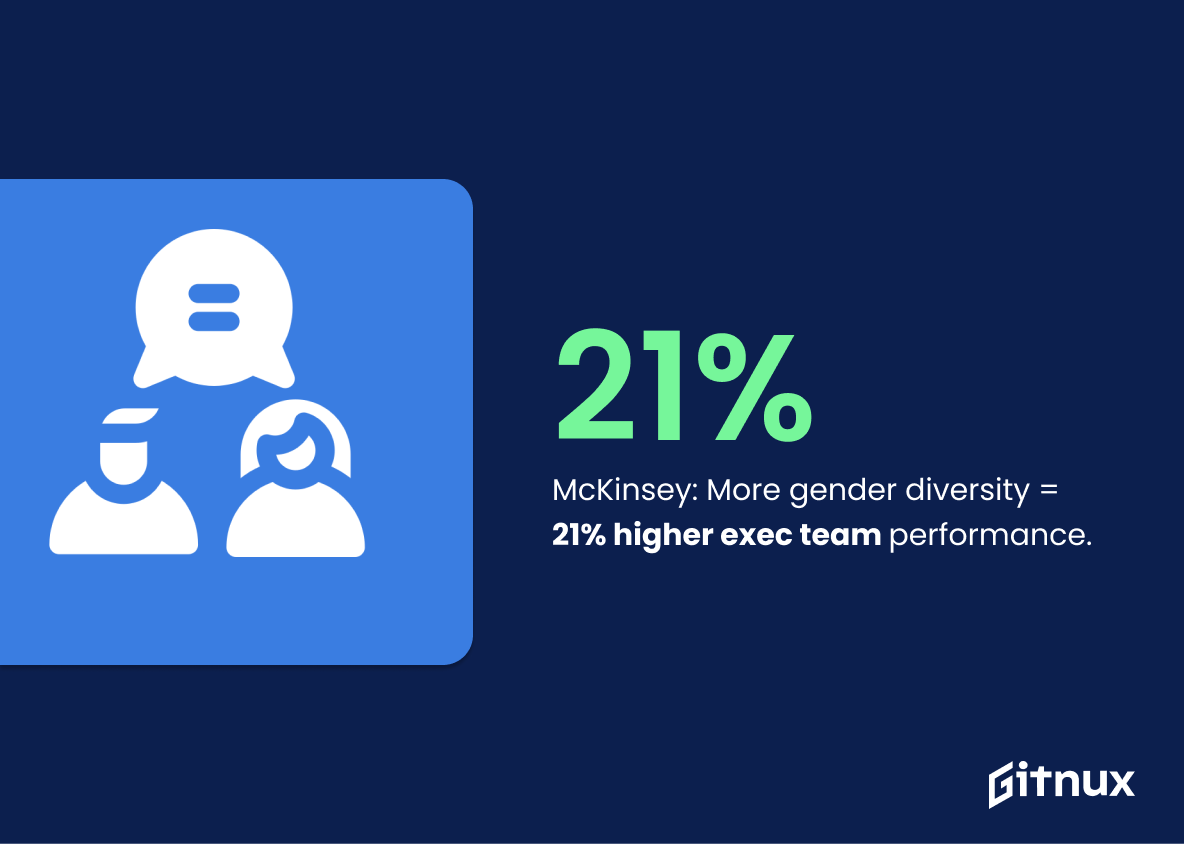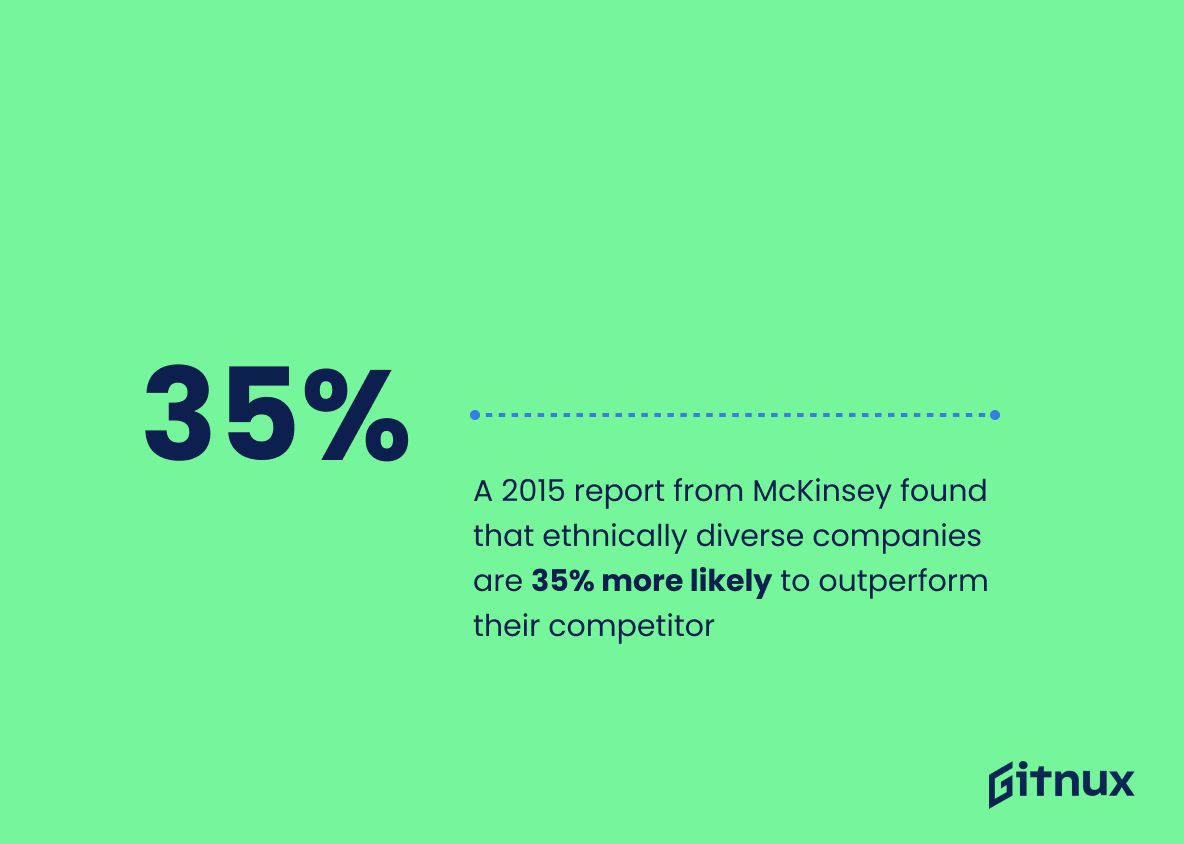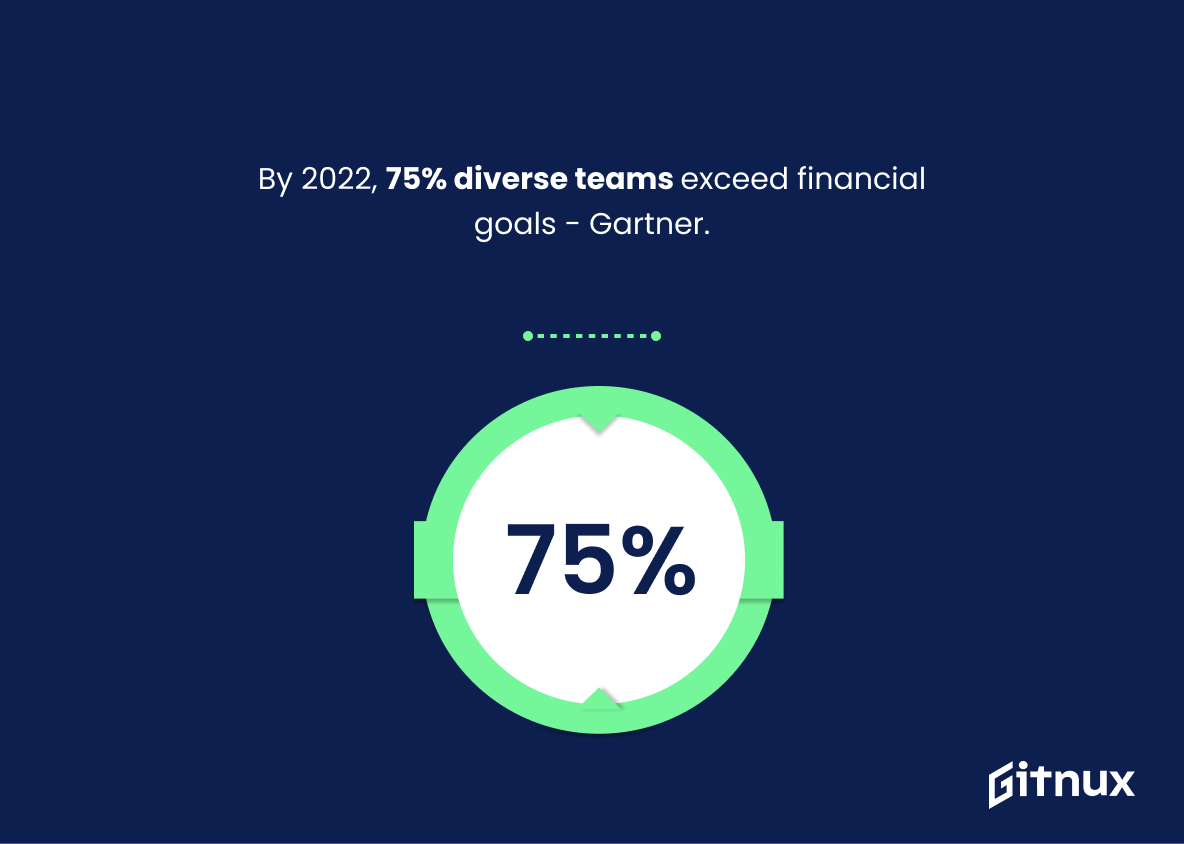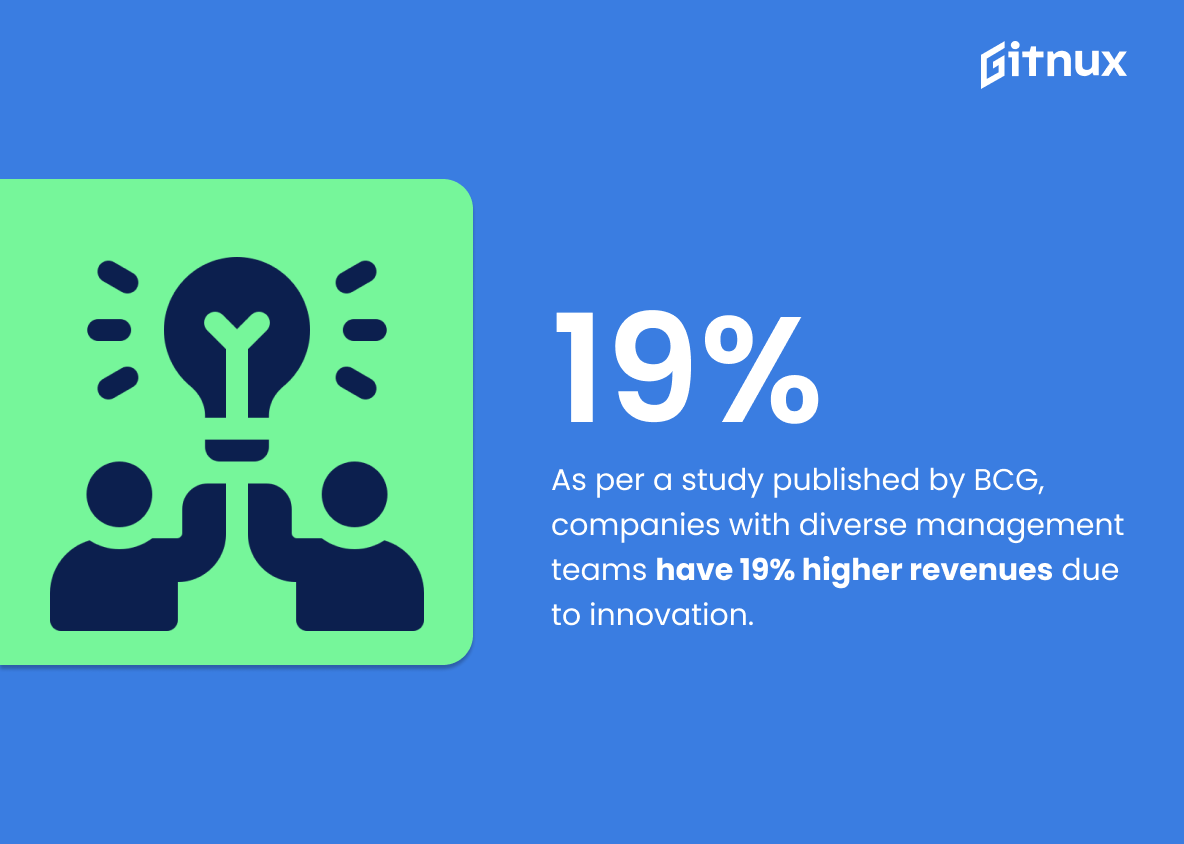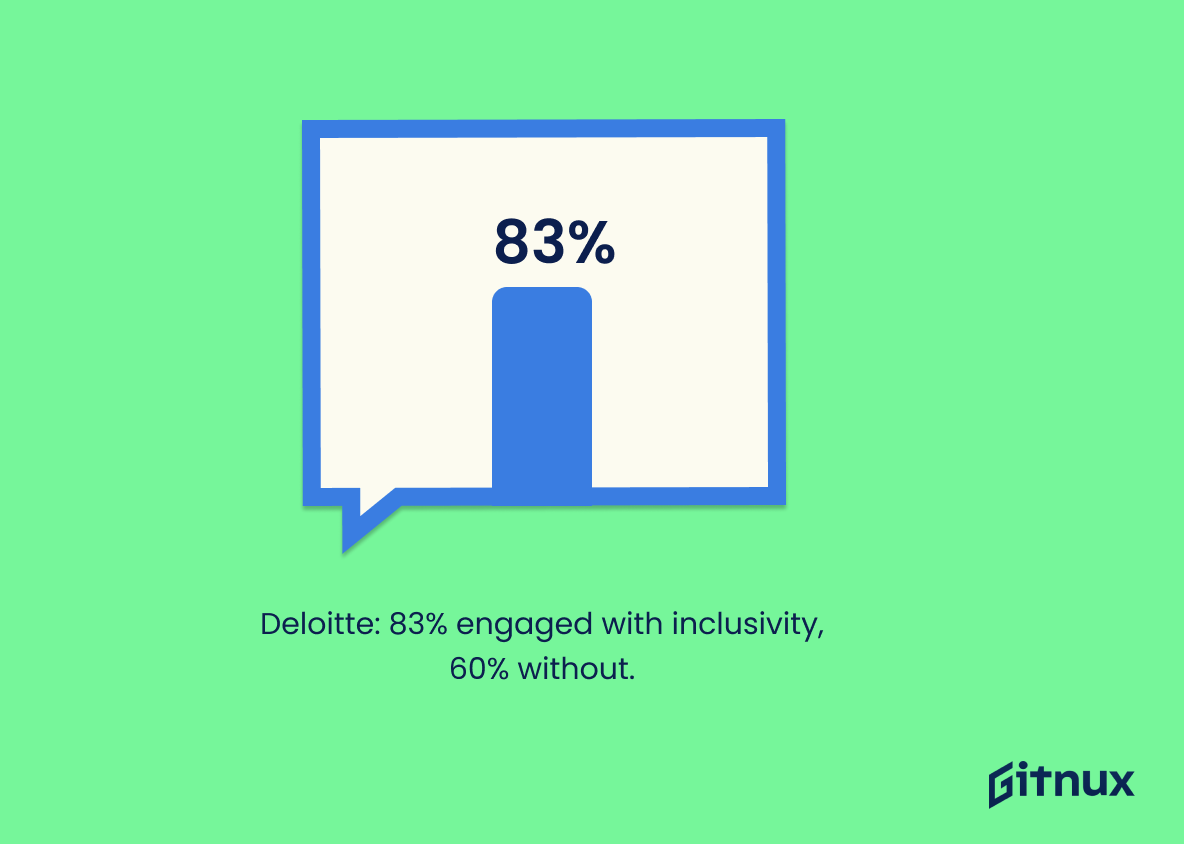In the ever-evolving corporate landscape, diversity and inclusion have taken center stage, proving essential for not just ethically harmonious workplaces, but also for business growth and innovation. An increasing emphasis is seen on magnifying diverse voices, experiences, and perspectives within an inclusive environment. Regardless of race, religion, gender, sexual orientation, age, nationality, or disability, every individual brings unique insights that can significantly drive a company forward. In an era where data is king, diversity and inclusion statistics provide quantifiable evidence of their impact on business outcomes. This article comprehensively explores these compelling industry statistics, underscoring the substantial role diversity and Inclusion play in shaping tomorrow’s business world. Let us delve deeper into understanding how embracing diversity and fostering inclusivity makes a tangible difference across multiple domains.
The Latest Diversity And Inclusion Statistics Unveiled
According to a McKinsey report, companies with more gender diversity on their executive teams are 21% more likely to outperform their competition.
This compelling statistic breathes life into the narrative on diversity and inclusion, painting a clear, data-backed picture of the direct correlation between gender diversity in the upper echelons of a company’s hierarchy and improved business performance. It underscores diversity not just as a social responsibility or a human resources buzz-word, but as a powerful catalyst that can phase shift a business from mere survival to significant outperformance of competitors.
In a blog post about Diversity and Inclusion Statistics, this statistic becomes a robust cornerstone. It firmly situates gender diversity as a key strategic lever that businesses can pull to gain a competitive edge. Moreover, it robustly validates the call for gender inclusivity, subtly demolishing any arguments that might minimize the importance of women occupying leadership roles in business entities. It’s the kind of statistic that gives pause, inspiring reflection on the prevailing gender dynamics within one’s own organization.
Business teams with an equal gender mix perform their tasks better than male-dominated teams, and a little bit better than female-dominated teams, as per a study from the Pioneer: New Hampshire Public Radio.
Highlighting this intriguing finding in a blog devoted to Diversity and Inclusion Statistics sheds a spotlight on the tangible impact of a balanced gender composition in business teams. Not only does it underscore the potential enhancement of team performance resulting from an equal gender mix, but it gently refutes the once prevalent perception of male-dominated teams’ supremacy on performance metrics. Remarkably, it also draws attention to the mild performance edge that this gender balance offers over female-dominated teams. The statistic, thereby, is a clear affirmation of the synergy derived from diversity and inclusion, cementing the necessity of these principles in fostering a productive workplace environment.
A 2015 report from McKinsey found that ethnically diverse companies are 35% more likely to outperform their competitors.
Showcasing the enchanting power of diversity, the 2015 McKinsey report beams a revealing light on the tangible benefits of corporate inclusivity. The report boasts a compelling statistic that attests to the business impact of ethnical diversity. Companies embodying such diversity seem to be effortlessly sailing ahead, leaving their competitors trailing behind by a remarkable 35%. In a blog post about Diversity and Inclusion Statistics, this vibrant fact gives a new depth, painting a persuasive picture of how weaving different ethnic threads into the organizational fabric can breathe innovation, dynamism, and competitiveness into a company. Far from being just a hollow slogan, diversity and inclusion become business imperatives that tangibly drive outperformance. This certainly is an eloquent, numerical testimony to the power of human differences fueling corporate excellence.
According to a study in the Harvard Business Review, firms with more workplace diversity attained more new clients than those with less diverse workforces.
Painting a compelling picture with data, the Harvard Business Review asserts that firms rich in workplace diversity are magnets for a higher count of new clients. Within the grand canvas of a blog post addressing Diversity and Inclusion Statistics, this narrative forms a pivotal masterpiece. It amplifies the core message, highlighting the robust correlation between diversity and the economic health of an organization. Evoking a sense of urgency, it underlines the business case behind the pursuit of diverse workplaces, essentially arguing that embracing diversity is not merely an ethical imperative, but a strategic avenue for attracting new clientele. Thus, this statistic serves as a powerful, empirical testament to the commercial advantages of diversity and inclusion.
By 2022, 75% of organizations with frontline decision-making teams reflecting a diverse and inclusive culture will exceed their financial targets, states Gartner.
Illuminating the projected future landscape, this Gartner statistic provides a compelling snapshot of the potential payoffs of diversity and inclusion. In the bustling marketplace of 2022, it suggests that 75% of organizations embodying these values at the forefront of decision-making are likely to surpass their financial benchmarks. By extension, this underscores the importance of diversity and inclusion, inspiring readers to understand how this duo can actively contribute to the financial growth of an organization. In a post discussing Diversity and Inclusion statistics, it serves as an exemplary argument, illustrating the significance of diverse voices and inclusive practices in achieving financial success within modern organizations.
As per a study published by BCG, companies with diverse management teams have 19% higher revenues due to innovation.
Highlighting this compelling statistic from a BCG study underscores the tangible benefits of prioritizing diversity and inclusion in the workplace. Not only does it promote a more equitable environment, but it also positively impacts the company’s bottom line. This ‘19% higher revenues due to innovation’ attribute, imbibed in diverse management teams, provides a solid, quantifiable testament to the power of diversity in driving innovative thinking and results. Hence, this fact sheds light on the essentiality of fostering diverse management teams, creating a bridge between diversity/inclusion and financial success, making it an illuminating addition to a blog post about Diversity and Inclusion Statistics.
Deloitte found 83% of millennials are actively engaged when they believe their organization fosters an inclusive culture, compared to just 60% when they don’t.
Illuminating the hidden correlation between millennials’ active engagement and an organization’s inclusive culture is a significant revelation furnished by Deloitte’s 83%. Pitted against the 60% engagement level in a less inclusive environment, the statistics uncovers the contribution of diversity and inclusion towards optimizing productivity. Covertly, it underscores that a robust inclusive culture is not just a moral obligation, but a strategic requirement for a company seeking to stimulate active participation from its millennial workforce. This cardinal statistic serves as both, a compass guiding organizations to prioritize inclusion, and a yardstick reflecting the magnitude of impact diversity can exert on employee engagement, making it highly relevant in the realm of diversity and inclusion statistics.
A study from the Technical University of Munich shows companies with women in leadership positions drive competitive advantage.
Underscoring the integral role of gender diversity in achieving competitive edge, this research from the prestigious Technical University of Munich adds compelling evidence to the growing pool of Diversity and Inclusion Statistics. The insights gleaned from this study, vividly demonstrate the correlation between the presence of female leadership in corporations and the emergence of competitive advantages. Such a finding puts emphasis on the fact that diversity, and specifically gender diversity, is far from a mere box-ticking exercise; it is a strategic lever that can be pulled to enhance business performance. This paves the way for some critical discussions and thought-provoking content within our blog post on the subject matter.
Companies in the top-quartile for ethnic/cultural diversity on executive teams are 33% more likely to have industry-leading profitability, according to a report by McKinsey.
Highlighting this particular statistic infuses compelling nuance into the conversation around diversity and inclusion. The figure underscores a measurable impact, revealing that the incorporation of cultural and ethnic diversity on executive teams is not just a matter of social justice, but also a powerful driver of business performance. The impressive 33% edge over industry profitability for top-quartile companies creates a compelling argument that diversity and inclusion can be synonymous with business success. This vital perspective helps illuminate how diversity and inclusion elevate both the morality and profitability within the corporate realm.
Conclusion
As evidenced by the diversity and inclusion statistics we’ve delved into, an integrated workplace is not a distant dream but an attainable reality that promises immense rewards. Embracing diversity and fostering an environment of inclusivity not only propels business performance but also nourishes a work culture of shared respect, understanding and acceptance. It is critical that businesses continue to strategize and innovate their diversity and inclusion initiatives to keep up with the dynamic world of today, as tomorrow’s success hinges on the actions of today. This journey may be complex and ceaseless, but the destination will surely hold the keys to unmatched productivity, creativity, and a future workplace that echoes equality in all its sense.
References
0. – https://www.www.nhpr.org
1. – https://www.www.bcg.com
2. – https://www.hbr.org
3. – https://www.www.tum.de
4. – https://www.www.gartner.com
5. – https://www.www2.deloitte.com
6. – https://www.www.mckinsey.com
